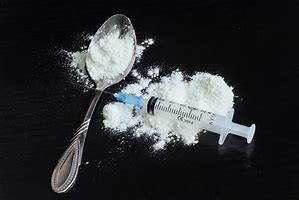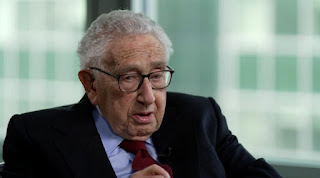Should the US end the war on drugs?
The war on drugs is a global campaign, led
by the U.S.federal government, of drug prohition, military aid and intervention, whose aim is to reduce the illegal drug trade in the US, popularized after the press
conference given on 1971 by President Richard Nixon during which he declared drug abuse "public enemy number
one". Two years before, Nixon had formally declared a "war on
drugs" directed toward eradication, interdiction, and incarceration. The Drug Policy Alliance, which
advocates for an end to the War on Drugs, have estimated that in 2021 the US
has spent a cumulative $1 trillion on it.
Sixty years after the initiation of the UN Single Convention on Narcotic Drugs and years after Nixon initiative, fundamental
reforms in national and global drug control policies are urgently needed.
This war is also fought abroad against the main
exporters such as Colombia, Mexico and Latin America. As part of its Plan Colombia program,
among other ones, the US government currently provides hundreds of millions of
dollars per year of military aid,
training, and equipment to Colombia, to fight left-wing guerrillas such as
the Revolutionary Armed Forces of Colombia (FARC-EP), which has been accused of being
involved in drug trafficking.
For what concerns internal data, 2020 was the
deadliest year on record for fatal overdoses. According to estimates over
93,000 people died of preventable overdose in 2020, the highest amount ever
recorded in a year. Synthetic opioids, including fentanyl and fentanyl
analogues, were involved in over 60% of overdose deaths. Overdose rates
involving these substances have steeply risen in the past decade, increasing
nearly 40 % from June 2019 to May 2020. People of color have
disproportionately suffered from overdose deaths, especially non-Hispanic
Blacks whose, between 2014 and 2017, death rate involving synthetic opioids
increased 818 %.
This demonstrates the need of a huge momentum by the
government to take new measures for public health solutions. It has been argued
that the Biden FRS Proposal won’t make the public safer. On the contrary, perpetuating
the overcriminalization of these substances often pushes drug addict people
further into the shadows where they will be more likely to encounter untested
substances that increase their risk of overdose. Criminalization also
creates a chilling effect on people calling for emergency services, for fear of
being arrested or otherwise penalized. Now is the time to commit to
evidence-driven responses with proven results: public health solutions focused
on harm reduction and treatment. Congress must provide individuals with access
to life-saving tools and education, including greater access to naloxone to
prevent overdose deaths, evidence-based treatment and recovery services,
medications like methadone and buprenorphine to treat opioid use disorder.
Shockingly, the Biden FRS Proposal accepts that
classwide scheduling will inevitably misclassify some drugs as Schedule I, and
that some people might wrongfully be prosecuted for those substances. Rather
than reject this overreach, the Administration adopts an essentially guilty-until-proven-innocent
approach. This is the antithesis of how the U.S. criminal justice system should
operate and is creating dangerous new precedent.
Overenforcement in response to emerging substances
makes necessary for the Congress impose harsh penalties on individuals on the
base of clear and specific dispositions about what is or is not illegal.
Moreover, the Biden FRS proposal does not provide for
retroactivity for past prosecutions of individuals pursuant to the temporary
classwide scheduling policy. The federal government already has authority
to “prosecute anyone who possesses, imports, distributes, or manufactures any
unscheduled fentanyl analogue with a high potential for abuse, no medical
value, and the ability to cause overdose deaths.”
Policymakers must turn to evidence and science, not
fear to seek answers. The most effective ways to address the overdose crisis
are evidence-based public health and harm reduction approaches. Such approaches
are supported by nearly two-thirds of Americans, who believe drug use should be
addressed as a public health issue, not as a criminal justice one.
The US House of Representatives narrowly approved, on
April of this year, a reform bill that would end marijuana prohibition by
removing this drug from the federal list of controlled substances. The bill
would expunge the record of those convicted of
marijuana-related offenses, and reduce sentences for others. Through a
tax on sales, it would also fund services in communities most impacted by
prohibition and provide support for a more diverse and inclusive market.
The Marijuana Opportunity Reinvestment and Expungement
(MORE) Act passed on April 1 and it will next head to the US Senate. Bans at
the state level wouldn’t be changed, though this act sends a strong signal
about the importance of building on the wave of state-level reforms resulting
in 18 states in allowing recently legal access to marijuana for adult use.
US drug laws severely impacted on black and brown
communities since ‘90s: black people were much more likely to be arrested for
simple drug possession – including marijuana – than white people, despite its
consumption is at the same rates in both communities. The MORE Act in facts is
focused on racial equity.
This bill will have long-term effects on minor drug
convictions on immigrants, which can result in deportation, ineligibility for
asylum, and inability to obtain papers to live legally inside the US. The bill
would protect noncitizens from immigration consequences due to a
cannabis-related event.
This last bill, now under Senate review, doesn’t seem
to end the war on drugs pursued by decades in US (it should be absurd and
absolutely nonsense) but it’s a good demonstration of tolerance and flexibility
towards the use and distribution of the less dangerous types of these
substances, like marijuana, spreadly and commonly used by people of any age,
especially young generations by keeping on warning and using precautionary
measures to deter the abuse and bringing forward educational campaigns in order
to get aware about the negative neuronal effects, combining a joint effort of
the justice system and the public health sector, being doctors and paramedical
staff always on the frontline for population safety, for the prevention,
treatment and rehabilitation from the addiction.





Comments
Post a Comment